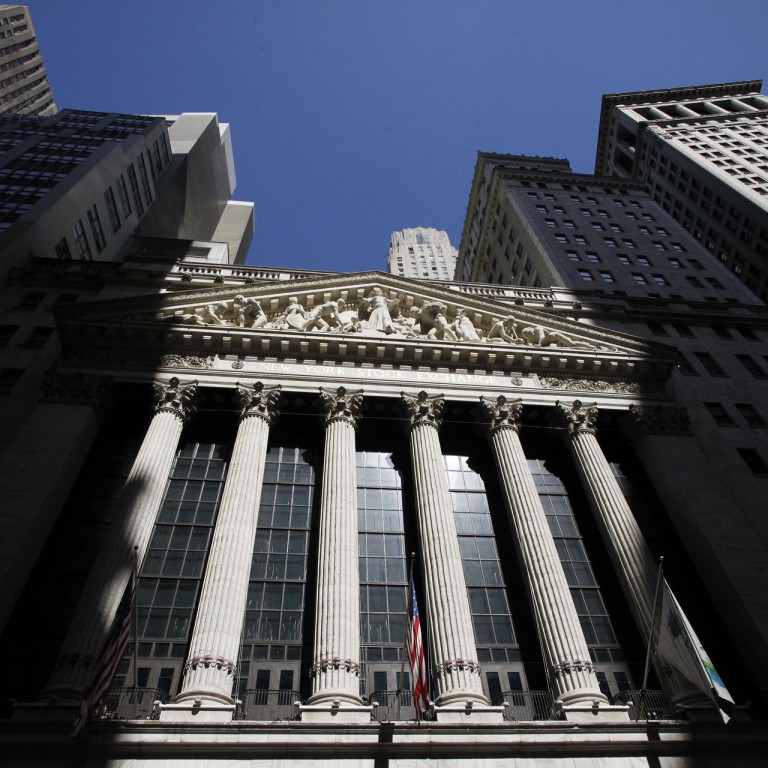
How much has loose Fed money helped US profits?
Lower interest costs for US firms have boosted corporate profits significantly since 2009
Many on Wall Street believe the Federal Reserve's monetary policy is behind record corporate earnings and the stock market's surge to all-time highs this year.
But how much is a burning issue for investors who wonder how the economy and stocks will perform once the Fed eventually eases its buying of US$85 billion a month in bonds and eventually allows short-term rates to climb.
Some believe the influence of the Fed's policy, known as quantitative easing, has been particularly important to the performance of the benchmark Standard & Poor's 500 Index.
There is no way of knowing what rates would have been without Fed intervention
"People underestimate the extent to which quantitative easing has benefited the S&P," said Robbert van Batenburg, director of market strategy at brokerage Newedge USA in New York. He called the effect akin to "an athlete on steroids".
The Fed's effect on corporate earnings is difficult to quantify. Van Batenburg estimates that corporate savings on interest expense after rates fell to historic lows has accounted for about 47 per cent of S&P 500 earnings growth since 2009.
At the end of 2009, quarterly earnings per share for the S&P 500 were less than US$20, and firms in the index paid about US$4 a share in interest, van Batenburg said. Now the S&P 500 is generating about US$26.70 a share in quarterly earnings but pays US$1.50 a share in interest.
Investors fear profitability could be hit hard when the programme is reversed and rates eventually rise.
"Then the argument becomes, if interest rates normalise we're going to have to dial back that clock. Are we going to see a pullback in earnings?" van Batenburg said.
The mere suggestion that the Fed is preparing to reduce its bond-buying caused stocks to sell off. The market has since recovered even though US bond-market rates remain higher than they were two months ago.
A look at rates suggests why earnings have more than tripled since 2000. The federal funds rate, the rate banks pay on overnight loans, was at 4.5 per cent in late 2007. It was sharply reduced and now sits virtually at zero.
Long-term rates followed, falling from more than 5 per cent in 2007 to record lows of about 1.4 per cent in mid-2012. The 10-year US Treasury yield was below 2 per cent until late May.
David Rosenberg, chief economist and strategist at Gluskin Sheff + Associates in Toronto, estimated in March that lower interest expense and corporate tax benefits have added about US$30 a share to S&P 500 operating earnings.
Interest paid by US businesses peaked in 2007 at US$2.83 trillion, falling sharply to US$1.34 trillion in 2011, the last year data is available, according to the St Louis Fed.
Lower rates account for almost 40 per cent of total profit growth, which does not include savings from lower leasing or rental costs because of the low rates, van Batenburg said.
"The result is that corporate America has seen a substantial decline in its cost of capital and it has greatly benefited its bottom line," van Batenburg said.
Higher borrowing costs are not likely to bite in the near term. Companies used the last few years to shift their debt loads further into the future, according to Morgan Stanley.
In December 2011, the heaviest volume of corporate loans was set to mature in 2014, 2016 and 2017. As of this June, most loans now mature in 2017, 2018 and 2019.
Not everyone believes the Fed is behind the profit surge.
"The real pickle here is that there is no way of knowing what interest rates would have been without Fed intervention," said Russell Price, senior economist at Ameriprise Financial Services.
Price believes earnings have benefited more from tax credits for research and development and favourable amortisation and depreciation schedules. Corporate taxes paid to the federal government as a percentage of GDP has hovered around 1 per cent since 2009, from more than 2 per cent the prior four years.
Even though borrowing costs are down and net profit margins are at all-time highs, operating profitability has been falling. This suggests other factors have been eating into earnings.
Known as ebitda margin, or earnings before interest, tax, depreciation and amortisation divided by total revenue, operating profitability peaked at 25.6 per cent in late 2007 and recently fell below 20 per cent.
But margins tell only one part of the story. Richard Bernstein, the former long-time investment strategist at Merrill Lynch, noted that in 1981 and 1982, margins peaked, and then fell during the entire bull market of that decade.
"I don't think history supports the notion that margin compression equates to bear markets," said Bernstein, who now runs his own asset management firm, Richard Bernstein Advisors.

